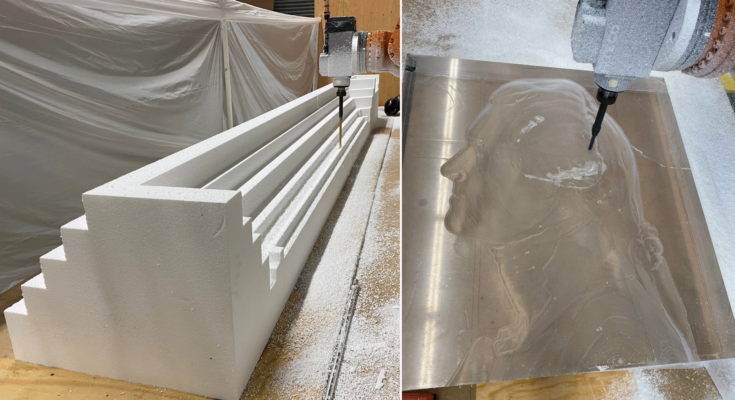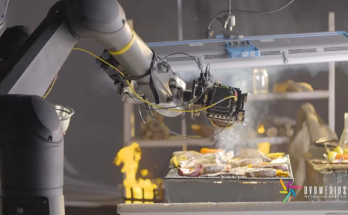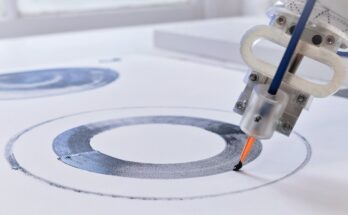If a client came to you with a completely different type of project that pushed the limits of your capabilities, what would you do?
And what if they had strict budget, time, and logistical constraints?
This is the type of challenge that Proptogroup handles every day.
In two of Proptogroup’s latest projects, they utilized RoboDK’s robot programming flexibility to create some amazing sculptures for two of their clients.
Here’s how they did it…
Introducing… Proptogroup
Proptogroup is a multi-disciplinary design studio (located in New York, USA) and fabrication studio (based in New Haven, USA). They most often work with artists, architects, designers, and builders on complex projects with critical constraints, whether those be timing, budgetary, or logistical constraints.
For this reason, Mena Henry, Proptogroup’s owner and principal engineer, describes the company as “a problem-solving creative space.”
When you enter their workshop, it is filled with fabrication machines: milling machines, various metal fabrication machines, a welding station, and two converted shipping containers at the end of the space that house a design studio and a materials store.
And then there’s the robot…
Finally, Henry explained the origins of the company’s name:
“The name Proptogroup starts with the word “prop. to.” Mathematically, it means “proportional to.” In this case, it’s about the proportional relationship of different industries, particularly in architecture and construction. Those are design, engineering, fabrication, installation, and logistics. We service all those trades.
Making complex sculptural work requires a lot of research and development, and material science. We count on partners that can enhance our skills. The small size of our company gives us an extreme level of flexibility and mental room to explore and play around.
Actually, playing of the biggest things that we do here, either with material or with technological processes. That really enhances the way that we think and are able to function with complex projects. “
Proptogroup uses RoboDK for Foam Architecture and Clear Acrylic Face
The two projects that we are exploring here are perfect examples of Proptogroup’s cross-disciplinary approach. Indeed, one is for the architectural space and the other is an artistic sculpture.
Foam Architecture
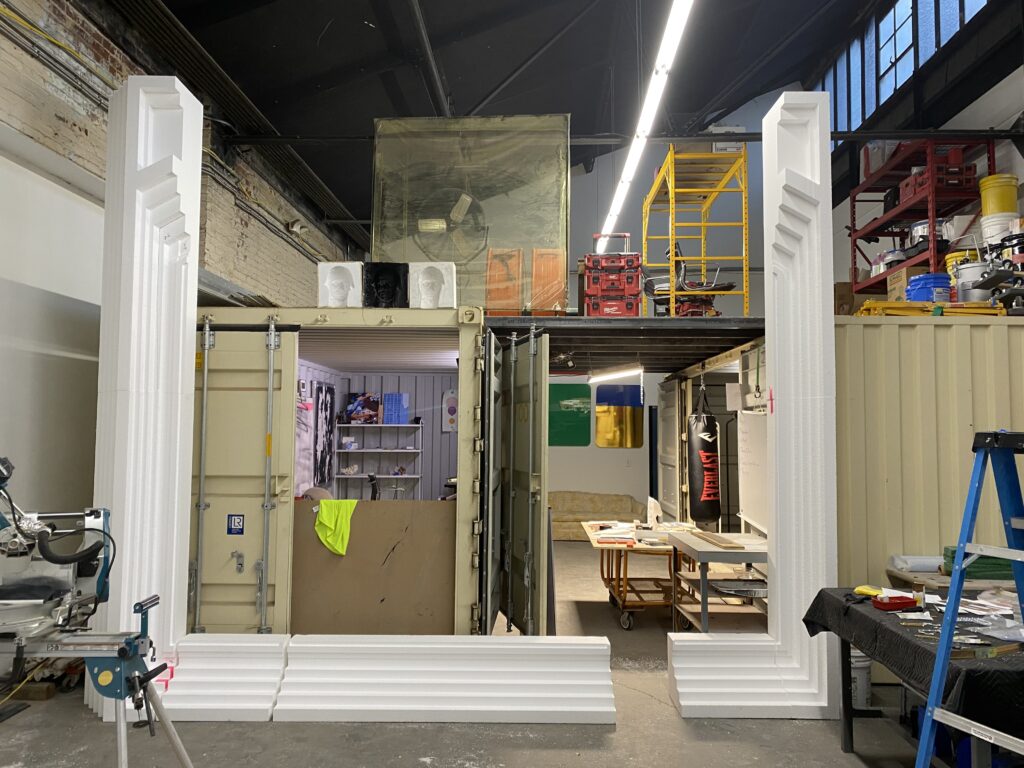
For the foam architecture, Proptogroup employed RoboDK to help them with robotic milling of a foam structure.
As shown above, the structure was made of expanded polystyrene (EPS) foam. In fact, this is a common material for robotic milling as it is easy to mill, has low moisture absorption, and doesn’t change its physical properties under normal operating heat. Such foam is often used, for example, in Hollywood to make architectural props for movies.
In this case, the EPS foam was being used as a form for a mold. The final piece would then be cast, using this mold, in glass fiber reinforced concrete (GFRC).
Acrylic Face Sculpture
The second project was a sculpture for artist Titus Kaphar. Kaphar is a painter, sculptor, filmmaker, and installation artist whose work examines the history of representation. Therefore, he often combines materials and fabrication methods.
In this case, Proptogroup has worked with Kaphar on several projects over the years. This latest one was the face of Thomas Jefferson sculpted in acrylic. They used robotic milling to sculpt the head and then a final manual polishing process.

Mena Henry explained:
“We took our time milling the acrylic considering the brittleness of the material. Timewise, I would estimate approximately 40 hours from roughing to finish pass. And 4 days of hand polishing.”
Proptogroup’s Robot Setup
Mounted on a rail and taking a prominent place in the workshop, Proptogroup’s large KUKA robot is, I think it’s fair to say, a centerpiece to their operations.
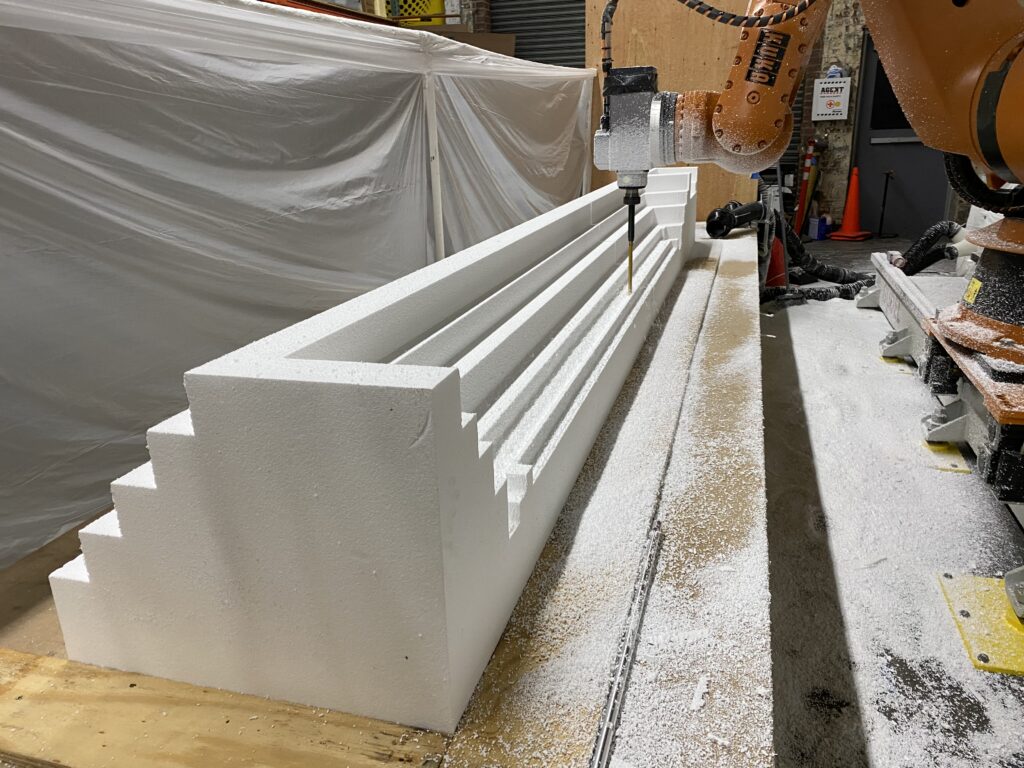
The Hardware
For the milling operation, the robotic hardware that Proptogroup used consisted of:
- A KUKA 6 DoF industrial robot
- A Güdel linear rail
- A milling head
Proptogroup will change the end effector of the robot depending on the fabrication needs of the particular project. No project is exactly the same so they need to remain flexible.
The Software
For programming the robot, Proptogroup used the following programs:
- Design was done in Rhino, a CAD package often used by architects.
- Machining paths were generated in Autodesk Fusion 360, a popular CAD/CAM software.
- Proptogroup uses RoboDK to seamlessly convert the machining paths into robot programs.
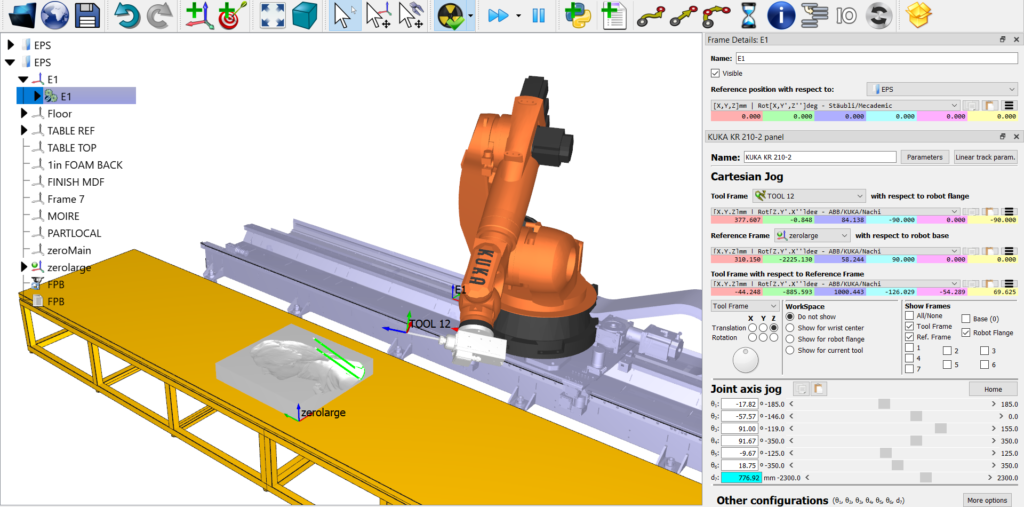
This software setup gave Proptogroup the flexibility to use the software that they are most comfortable with the power of RoboDK’s robot programming capabilities (actually, they might have been able to eliminate a step as RoboDK has a plugin to work directly with Rhino, but RoboDK fits in with whatever workflow our users most prefer).
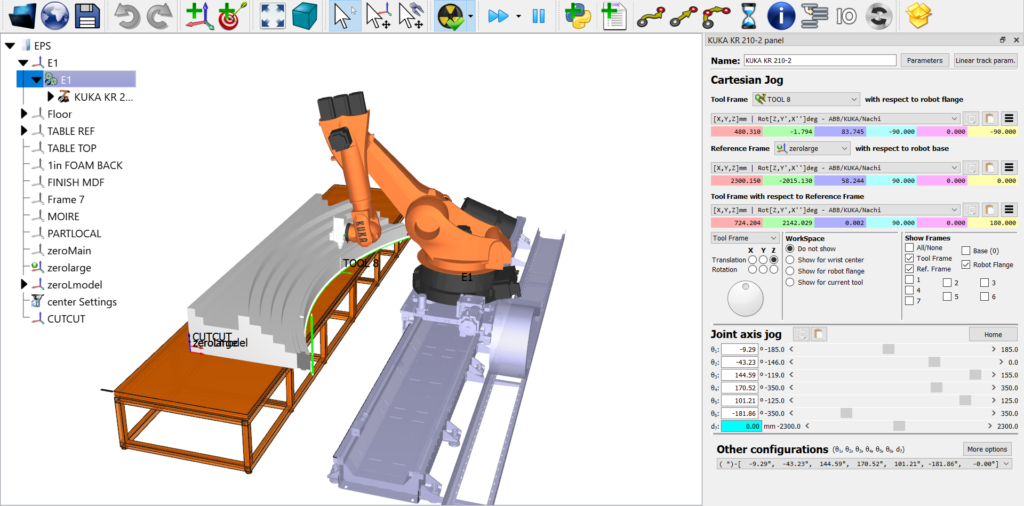
How Proptogroup uses RoboDK to Mill an Intricate Face Sculpture
After all, RoboDK allowed Proptogroup to quickly turn their designs into a functional robot program.
In fact, conventional robot programming methods requires to have extensive robotics expertise to program the robot. Instead of focusing on the design and fabrication – which is where Proptogroup’s expertise lies – they would have had to waste a lot of time and effort “getting the robot to work” if they were using the conventional methods.
As a result, Proptogroup reduced robot programming to a minimum using RoboDK.
Indeed, the software easily slots into your existing workflow, whatever that may be, and allows you to focus on those aspects of the process that you are best at.
What Interesting Project Could You Use RoboDK for?
Overall, Proptogroup undertakes many interesting projects that push the boundaries of fabrication techniques under critical constraints.
If they can create such elaborate and successful projects using RoboDK… think what interesting projects you could achieve!
How could your next robotic fabrication project push the boundaries of what you are currently capable of?
Finally, a good place to start is to download a free trial copy of RoboDK and try it out for yourself.
What will your next robot project be? Tell us in the comments below or join the discussion on LinkedIn, Twitter, Facebook, Instagram, or in the RoboDK Forum.

